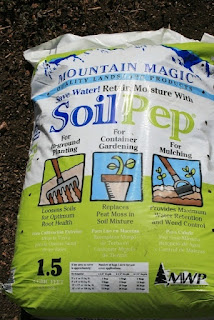When it comes to adding color and interest to the garden, it’s hard to beat the butterfly bush. Available in a variety of colors, butterfly bushes will bloom continuously from mid-summer through fall. These easy to grow, sun-loving shrubs come in an array of rich colors and will attract pollinators. Sun-loving are key words when it comes to growing butterfly bushes. To do their best, butterfly bushes need a minimum of six hours of sunlight every day. Anything less will result in reduced flower production.
Butterfly bushes need to be planted in well-amended soil. Whether you’re dealing with our native clay or some cases, sandy soil, it’s important to add organic material at the rate of 50:50 to the planting site. For best results, use locally produced products such as Earth Essentials. They’re designed to work in our soils. Dig the planting hole twice as wide and once again as deep as the container the butterfly bush came in. A wide hole allows roots to grow out into the amended soil to gather moisture and nutrients. The easier you make this expansion possible, the faster each plant will adapt to its new environment. Once the planting hole is ready, fill it with water and observe how long it takes to drain. If it takes more than five minutes, the soil to organic material ratio is wrong, and you need to add more organic material. Once the site is ready, apply a treatment of Root Stimulator to the planting hole, then remove the butterfly bush from its container.
You may see roots circling at the bottom, as this one does. Gently pull them loose and spread them out in the planting hole. Back fill with amended soil, using enough to create a shallow basin to facilitate watering. Once in the ground, it’s important to keep plants evenly moist. This is best done by checking each new planting daily and hand watering as necessary. Water slowly. Fill the basin you built around each plant and let the water slowly seep in. Don’t rely on automatic irrigation for the first few weeks. Applying mulch to new plantings is an effective way to conserve water and reduce heat stress on your plants.
A 2- to 3-inch-thick layer of Mountain Magic Soil Pep mulch can reduce moisture loss from your soil due to evaporation. During the blooming season, it’s important to remove spent flowers promptly. This is called deadheading and it’s done to keep the plants energy focused on flowering, not on seed production.
Cut the spent blossom branches back to the first juncture. Feed your butterfly bush through the bloom season with a general-purpose fertilizer such as 11-15-11 or 4-9-3 organic with beneficial mycorrhizae. In our climate, a butterfly bush grows more like a perennial, dying back to the root crown each fall and reappearing in spring. Late fall, early winter is the time to prune butterfly bushes. After a hard frost, prune butterfly bushes to the ground. Around Thanksgiving, water thoroughly and apply a two-to-three-inch layer of mulch. This is to help keep the ground cold and stable.
Monarch® Collection ‘Glass Slippers’
On a closing note: butterfly bushes tend to be one of the last plants to leaf out in spring, so it’s important to be patient. It may be mid-June before your butterfly bush begins to show.







No comments:
Post a Comment